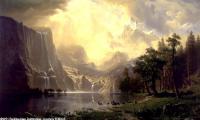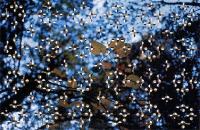- Funding OpportunitiesPosted bybcatoonJune 9, 2010
Classroom Earth supports teachers around the country who want to make environmental education part of their curriculum. Classroom Earth's 2010 Professional Development Grants enable applicants to take two online courses, creating a strong foundation in environmental education.
Apply By:07/09/2010Link:Learn more.Posted in:- Science
- Mathematics
- Language Arts
- Biology
- World History
- American History
- American Government
- Economics
- Earth Science
- Geometry
- Algebra I
- Algebra II/Trigonometry
- Chemistry
- Physics
- The Arts
- Foreign Languages
- Social Studies
- Environmental Science
- Statistics
- Visual Arts
- English 9-10
- English 11-12
- Calculus
- ESL
Latest in this Subject
View more News, Resources , Professional Development, Grants, Success Stories
- Success StoryPosted byAnonymousonNovember 9, 2009
How to integrate environmental education with photography and technology
Scott Olson, a 12-year teacher in the Tonasket School District in Tonasket, Wash., developed a photo point monitoring project for his high school students after being inspired by a wildlife manager from the Washington Department of Fish and Wildlife.
Photo point monitoring is a tool used to quickly and effectively document changes in vegetation, soil and other landscape features by periodically photographing the landscape. The wildlife manager, who regularly visited Olson’s classroom, came upon historic photographs of local landscapes and suggested Olson use the photographs to conduct photo point monitoring.
Olson ran with it and soon had his students engaged in an exciting learning experience that allowed them to incorporate numerous subject areas and learn in an outdoor setting.
- ResourcePosted byAnonymousonNovember 5, 2009
This resource introduces students to the basic principles of landscape painting. Students will also learn geography skills to gain appreciation for the physical characteristics of different regions of the United States. It also explores the way that Americans felt about their growing nation during the period of westward expansion until the end of the nineteenth century.
- ResourcePosted byAnonymousonAugust 25, 2009
The relationship between man and nature has been represented in many ways and in many cultural forms. Visual art, novels, films and songs all pose questions and assert opinions about the relationships between humans and animals, environmental responsibility and mankind’s place in the landscape. These lessons explore representations of the natural world made by contemporary artists in a variety of media including drawing, watercolor, photography and sculpture.
- ResourcePosted byAnonymousonAugust 21, 2009
Fractals are found extensively in nature, from tiny snowflakes to towering mountains. Because of this, fractal geometry has many practical applications. Geologists can model the meandering paths of rivers. Botanists can model the branching patterns of trees. In this activity, students will investigate fractals, learn how fractals can be used to determine the length of a coastline and explore the expression of mathematical principles in art.
- ResourcePosted byAnonymousonAugust 13, 2009
Artists find both materials and inspiration in their natural environment. Materials are collected, combined and transformed through the creativity of human hands. This educational guide delves into the relationship between artists and their environment, examining how artists reflect upon and respond to nature and how deep connections with the natural surroundings can inspire them to create beautiful objects.
Access this Resource
Do you know of a resource that you think other teachers should know about?
Share your resource!






